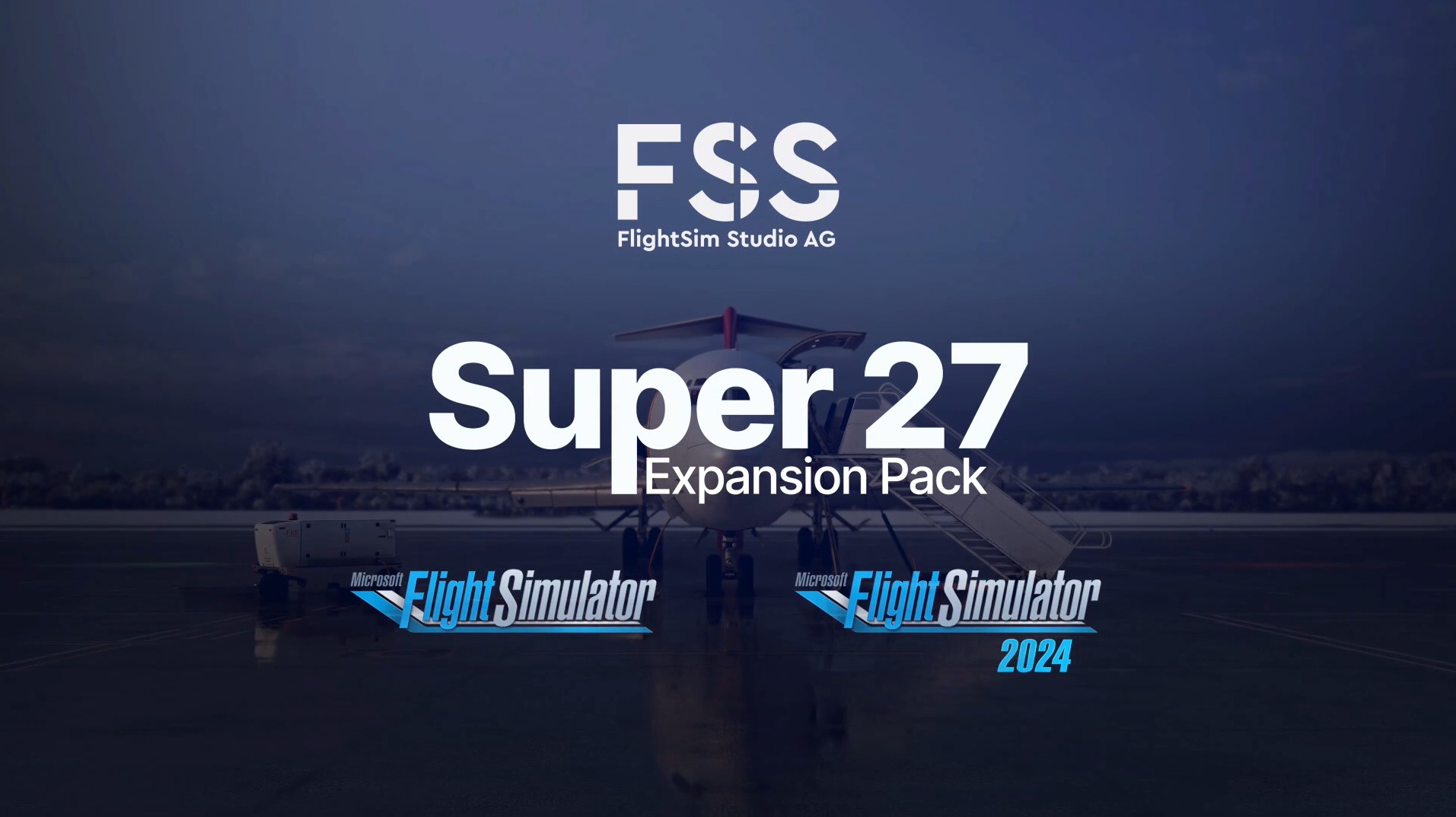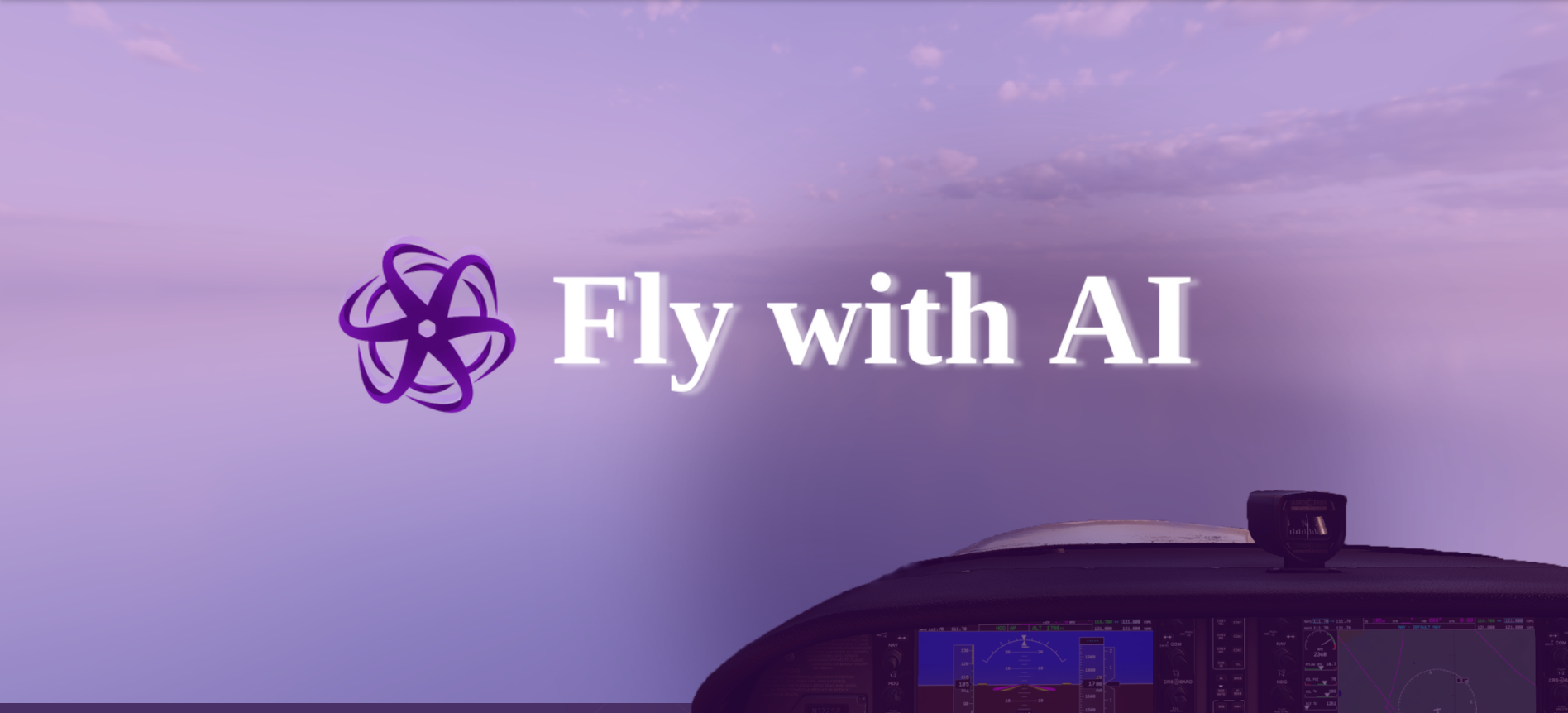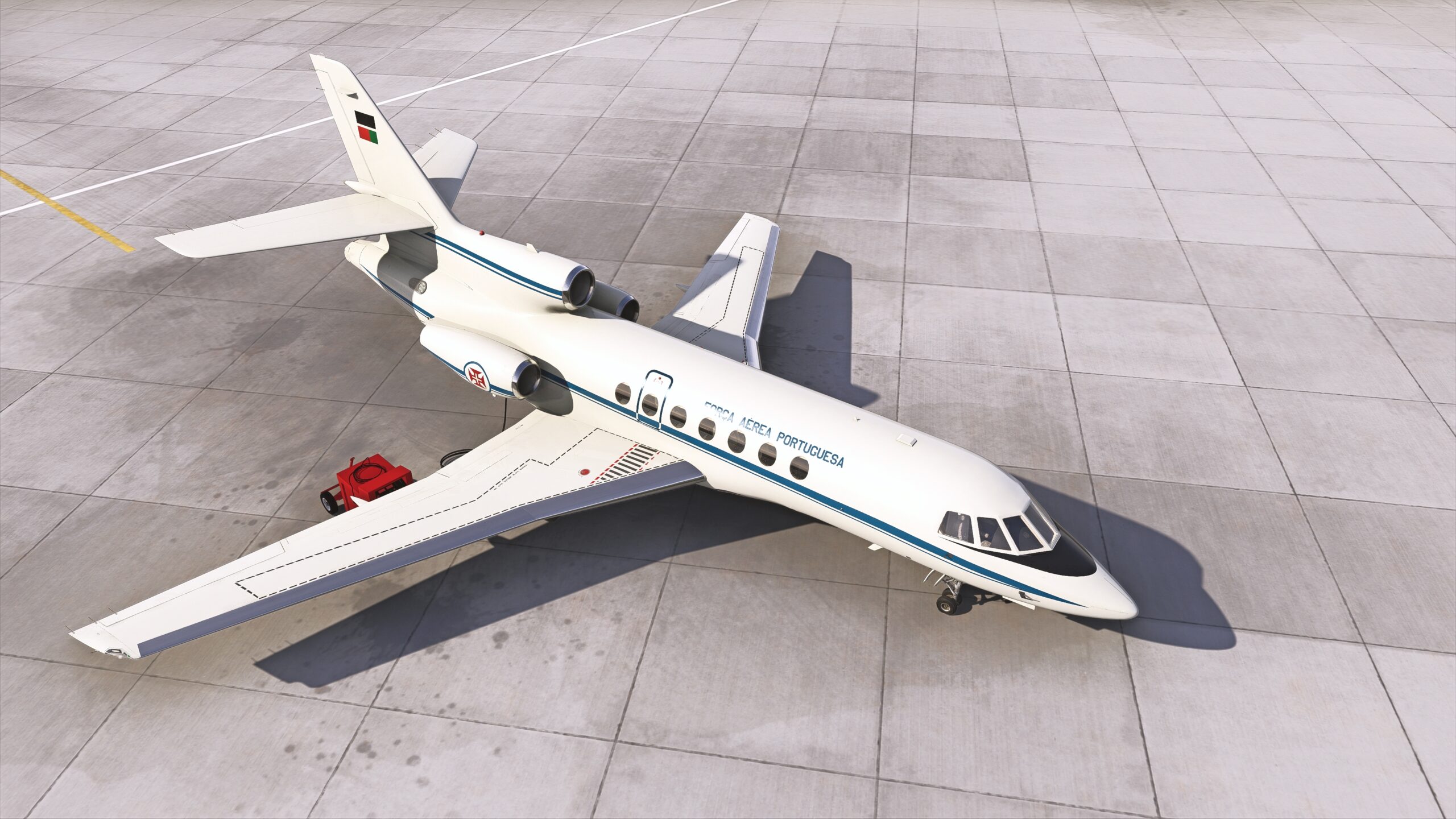The all-weather, short and medium-haul passenger and cargo transportation airliner has arrived for MSFS. The famous Dash 7 turbo-prop is an all-metal, high-wing monoplane powered by four Pratt & Whitney Aircraft of Canada (Ltd.) PT6A-50 turboprop engines driving four-bladed, constant-speed, variable, and reversible-prop propellers. This is the precursor to the famous Dash 8 used around the world.
This review will help you understand what it is, the quality of the sim version, and if you would want to add it to your hangar collection in MSFS. The Dash 7 was developed for MSFS by PILOT’S.

What is the Dash 7?
The Dash 7, as we all recognize it, is a regional airliner introduced by DeHavilland Canada in 1975 as a bigger version of the DHC-6 Twin Otter. The successful Twin Otter could hold 18 to 20 passengers and DeHavilland wanted to hold more passengers for the regional airliner routes which were already well-served by other manufacturers. Hence, the DHC 7 was designed and manufactured for military use and civilian regional airliner routes. Eventually, the twin-engine Dash 8 replaced the Dash 7 and is in full use today around the world. The majority of the Dash 7s around the world are still in operation today.
The Dash 7 is a four-engine turboprop airplane seating 50 to 54 passengers and the crew. The cargo version has the capacity to transport up to 11,700 pounds of cargo. It has retractable tricycle gear and a high-tail elevator/stabilizer. The cabin is pressurized and it has a ceiling of 20,000 feet. With their famous STOL capabilities in the DHC series of aircraft, the Dash 7 could get into and out of small airstrips and city centers, having runways that the other aircraft could not use, such as unimproved and unpaved airstrips. Also, with new noise restrictions of the day, the Dash 7 met those reduced noise restrictions perfectly. You will notice a lower RPM and bigger propeller blades to meet those noise restrictions. It really was just essentially a larger version of the successful Twin Otter. Changes included the addition of cabin pressure, retractable forward-folding gear and a larger T-tail intended to keep the elevator clear of the propwash during takeoff and a great cruise speed of 231 knots.

Short Takeoff and Landing (STOL)
This is a big feature and advantage when you are competing with other aircraft for regional routes into small airports. This feature helped sell the Dash 7 and then the Dash 8 afterward. Airports like London City Center, with its steep approach are perfect for the Dash 7 to get in and out at steep angles and short runways. However, this feature was not always desirable as the Dash 7 was used to fly into large airports as a connector flight. With their long, paved runways, the STOL feature wasn’t needed. This limited its desirability with regional airlines who were looking simply for a connector aircraft. Regardless, the ability to fly into short airstrips, city airports and unimproved airstrips was utilized by the military and civilian airlines alike. The ability for reversible propellers helped a lot with STOL landings. Here is an excellent anecdote about the Dash 7 from a controller who worked with them in real life. In my tests, I flew into a 2,000 foot runway (Barrie Airpark, Ontario Canada) and stopped halfway down the runway, then took off from midfield and was airborne by the end of the runway. This is a very impressive STOL airplane.
PILOT’S Simulator Version for MSFS
I flew the RTM version in many tests of its capabilities and originally flew it out of Downsview Airport (CYZD) in the Toronto, Ontario, Canada area, where it was developed. I watched it doing test flights in my youth. For testing in the simulator, I flew it into Toronto Island Airport, where every 2 minutes there is a Dash 8 flying in or out from its 4,000-foot runway. I also flew it into shorter airstrips in the northern airports such as Barrier Airpark and even Baldwin grass strip. I can attest to its excellent STOL capability. For the 2,000-foot runway test, I landed and stopped in 1,000 feet; halfway down the runway.



PILOT’S is the company that has produced the MSFS version of the Dash 7. I previously wrote about its development here. It has gone through an extensive pilot testing program, beta testing, RTM testing, and finally in the hands of the potential twelve million MSFS flyers. I used the RTM (release to manufacturer) version and the POH wasn’t ready yet, so I obtained a Dash 7 POH from Flight Manuals Online for this review. I did do a final test after two updates and the final version was released for sale.
Review Criteria
As a pilot of GA planes in real life, I have also been on hundreds of flights in regional airliners such as the Dash 7 and Dash 8 over many years of business travels. I have marveled at how these two variations of turbo-prop airplanes can fly through any weather into what seems like tiny airstrips from the air. For this review, I have the RTM version of the Dash 7, a Honeycomb Alpha and Bravo home cockpit setup, with controls mapped so I can operate all four engines from two throttle levers.
I flew it on short hops, staying a few thousand feet AGL, and on longer flights to test the ceiling of the specs. In all configurations, tests proved to be accurate with the POH (Pilot’s Operating Handbook). The RTM copy of the PILOT’S Dash 7 for MSFS was provided to FSNews by PILOT’S.
We will examine these criteria when testing the sim version of this Dash 7:
- Quality
- Flyability
- Complexity
- Compromises
- Summary Assessment


Quality
The quality of newer MSFS aircraft has increased to an insane level of quality in the past 3 years of the life of MSFS. Developers are making most aircraft in 4K resolution and even up to 8K. They are making cockpit systems all clickable and operational. They are taking advantage of sim updates that make windshields realistic with rain effects, circuit-breakers with full electrical functionality, and dials/gauges with jitter and realistic functionality. The quality bar is so high that anything less is noticeable.
This is true of this version of the Dash 7. The level of detail and realism is a thrill to experience. If something is not possible to simulate in MSFS, the hover label simply says, “Inop”, meaning inoperable. Going through the checklists is as tedious as the real thing. Forget something and it will possibly haunt you along the way. But as far as the overall quality of the gauges, interior fabrics, exterior liveries and the effects of variable props and landing gear goes, this is a top-notch quality airplane.
Flyability
The real test is to go through the checklists, get familiar with its various systems, both in the panel in front of you and the overhead panel full of switches and buttons and then take to the air. This isn’t your typical “push the start button and you are off” kind of plane. We want simulators to simulate, and the more realistic it is, the better. This product does not disappoint. I like to use the term, “Flyability” to assess how it handles in flight. The flyability is top-notch from the lag of a typical turboprop engine response to the feel of the plane as it approaches stall speed.
During cruise, the numbers work according to the POH. That is the measure of flyability. Match the POH speeds and feeds and see how the sim version holds up. Top marks for flyability in all phases of flight. I took it up to altitude for some lazy eights, power-on stalls, and power-off stalls. I tried the reversible propellers on landing. Right on with the POH. Very impressive flyability of this airplane. I got in and out of a 2,500-foot airstrip using STOL techniques. This is a real test of its ability, and probably the shortest airstrip it could possibly handle.

Complexity
There is no doubt that four engines are a handful as far as complexity goes. That makes for a lot of gauges for each of the areas we need to monitor for each engine. The layout is straight-forward, with a recognizable engine layout in the center of the panel so both pilots can easily see them, just like the real thing, of course. The POH clearly states the operational speeds, temperatures, and “out-of-zone” parameters for every phase of flight. Each of these is easily set by your cockpit controls, both in the sim with your mouse and in your home cockpit with standard controls. The complexity of the airplane is no more bothersome in the sim as it is in real life. You just have to learn it. Start with just one engine and study what are its operational parameters, then simply apply them to all four. DeHavilland simplified this with the Dash 8 (reduction to two engines) and one could easily adapt to the Dash 8 after flying the Dash 7. Engine management and emergency engine-out scenarios worked as they should, according to the POH. My engine-out tests, for one engine or for all of them went according to POH. Very impressive.
Additionally, taxiing around airports with two engines stopped is normal in these planes. With all engines running, even at idle, taxiing is too fast and you find yourself riding the brakes continuously. This plane just wants to fly and it has the power to do it easily. For your home cockpit engine lever mappings, you map four throttles to two physical levers and four mixtures to two physical levers. You will also want that reversible propeller function, so you need to map those as well, as illustrated here.

Compromises
With any simulation aircraft, there has to be something that is left out, not exactly right, or way off base. We have witnessed this in past airplane projects, so we have to address this for every airplane review. The problem is, I can’t find any mention of compromises, or substitutions in this plane. Not in their website, their emails to testers, nor their manual. The only thing I can find is simple “Inop” or inoperable switches or buttons that just can’t be simulated in MSFS, such as
The sounds are excellent, and the animations such as the landing gear are top-notch. The decals and livery quality is 4k or above. If there are compromises, they are only known to the developers and are well hidden. Take in that outside view while you listen to the hum of four turboprops. Although in real life, there is a synchro switch to keep them all within 2rpm, no such function exists in the sim.
But I will mention that the RTM version that I initially tested (Release to Manufacturer) had quite a few anomalies that have since been addressed before the final version was released to the public. These were annoying things like one of the throttle levers not working correctly, or the GNS 530 screens flickering. It is a good indication of the support you will receive when they immediately fix bugs that testers find. They rolled out two updates just before release for sale. Kudos to the team for their responses and fixes.

Summary Assessment
In my flight tests, I flew out of Downsview (CYZD) where the Dash 7 was manufactured by DeHavilland Canada, then north to Barrie/Airpark for a very short field landing to test its STOL capabilities, then back down to Buttonville for a touch-and-go, and finally to Toronto City Center Airport (CYTZ), known to passengers as Billy Bishop Airport. All the while, covering great distances very quickly and not able to fly very high, due to the close proximity of the airports. So a final flight was in order over a longer distance from Toronto City Center to Ottawa, Ontario, 6 hours north by car. I got to test the Dash 7 at altitude and see how it performed. I am glad to say that it was everything I expected, given my studies of the POH and what to expect. To this day, Dash 7s and Dash 8s fly out of Toronto City Center to points in North America within its 1,200-mile range. City Center doesn’t allow jet aircraft, so the Dash 7s and 8s are a perfect match for city airports. The release announcement was made here at FSNews.
The product comes with features such as numerous 4k liveries right out the gate, with more popping up on usual websites such as Flightsim.to A quick-start manual is included with the Dash 7 (POH) and it has full support for the TDS GTNXi and GNS 530 GPS, along with the steam-gauge variant. We can’t really test air-conditioning or pressurization, but those are parameters that separate sim from real. Recently, a POH and a checklist became available on flightsim.to here.
Those of us who are looking for a regional airliner with turboprops and STOL capabilities are right at home with this PILOT’S version of the Dash 7 for MSFS. Hats off to PILOT’S for this product refinement. This one stays in my hangar and regularly flies out of Toronto City Center Airport now.
Feel free to join our Discord server to share your feedback on the article, screenshots from your flights or just chat with the rest of the team and the community. Click here to join the server.






